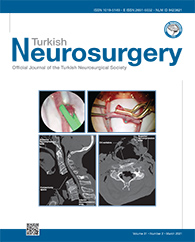MATERIAL and METHODS: A total of 94 cases of TBI with intracerebral hemorrhage, admitted to the emergency department who did not need surgical intervention based on a primary brain spiral computed tomography (CT) scan, were randomly assigned into two groups of 47 patients. In the intervention group, intravenous TXA was administered as one gram of bolus and one gram every 6 hours for 48 hours, and in the control group, the placebo was administered in the same way. After 6, 24, and 48 hours all the cases underwent a brain CT scan. Scans were examined for the size and diameter of hematoma and the midline shift. The information regarding the level of consciousness, hematoma volume, and diameter on CT scan were recorded on arrival and 48 hours later.
RESULTS: Statistical results depict that while there was no considerable difference in the demographic aspect of the two groups, the volume and diameter of hematoma and the midline shift in the first CT scans and also their level of consciousness, the diameter and volume of hematoma and also the amount of hematoma expansion in follow up are significantly different in the two groups.
CONCLUSION: The present study showed that the prescription of TXA would reduce the amount of hematoma expansion in traumatic intracerebral hemorrhage, and that medication can be introduced to reduce morbidity and complications.
Keywords : Traumatic Brain Injury, Intracerebral Hemorrhage, Tranexamic Acid




